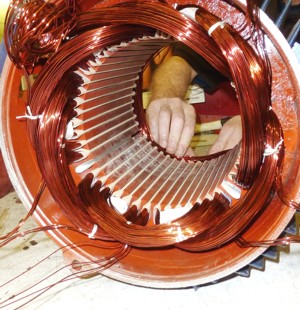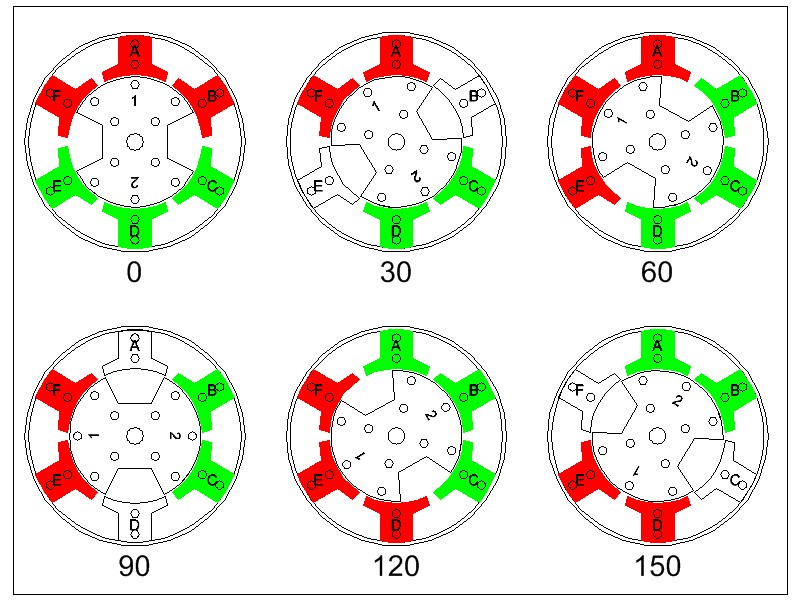Unlike poles attract & like poles repel”- a machine works on this statement is REPULSION MOTOR.
in this post i'll discussion some basics of repulsion motor.
A repulsion motor is a type of electric motor f or use on alternating current (AC). It was f ormerly usedas a traction motor f or electric trains but has been superseded by other types of motors and is now onlyof historical interest. Repulsion motors are classif ied under single phase motors. In repulsion motors thestator windings are connected directly to the AC power supply and the rotor is connected to acommutator and brush assembly, similar to that of a direct current (DC) motor
.JPG/300px-Rotterdam_Ahoy_Europort_2011_(14).JPG) Construction
Construction
The motor has a stator and a rotor but there is no electrical connection between the two and the rotorcurrent is generated by induction. The rotor winding is connected to a commutator which is in contact
with a pair of short-circuited brushes which can be moved to change their angular position relative to an
imaginary line drawn through the axis of the stator. The motor can be started, stopped and reversed, and
the speed can be varied, simply by changing the angular position of the brushes.
Voltage
Most commutator motors are limited to about 1,500 volts because higher voltages give rise to a risk ofarcing across the commutator. Repulsion motors can be used at higher voltages because the rotor circuit
is not electrically connected to the supply.
Principle
Repulsion motors are based on the principle of repulsion between two magnetic f ields. Consider a 2-polesalient pole motor with a vertical magnetic axis. The armature is connected to a commutator and brushes.
The brushes are short circuited using a low-resistance jumper. When alternating current is supplied to
the f ield (stator) winding, it induces an electromotive f orce (emf ) in the armature. The direction of
alternating current is such that it creates a north pole at the top and a south pole at the bottom. The
direction of induced emf is given by Lenz's law, according to which the direction of induced emf opposes
the cause producing it. The induced emf induces current in the armature conductors and the direction of
the induced current depends on the position of the brushes.
Follow me on Academia.edu

















0 comments:
Post a Comment